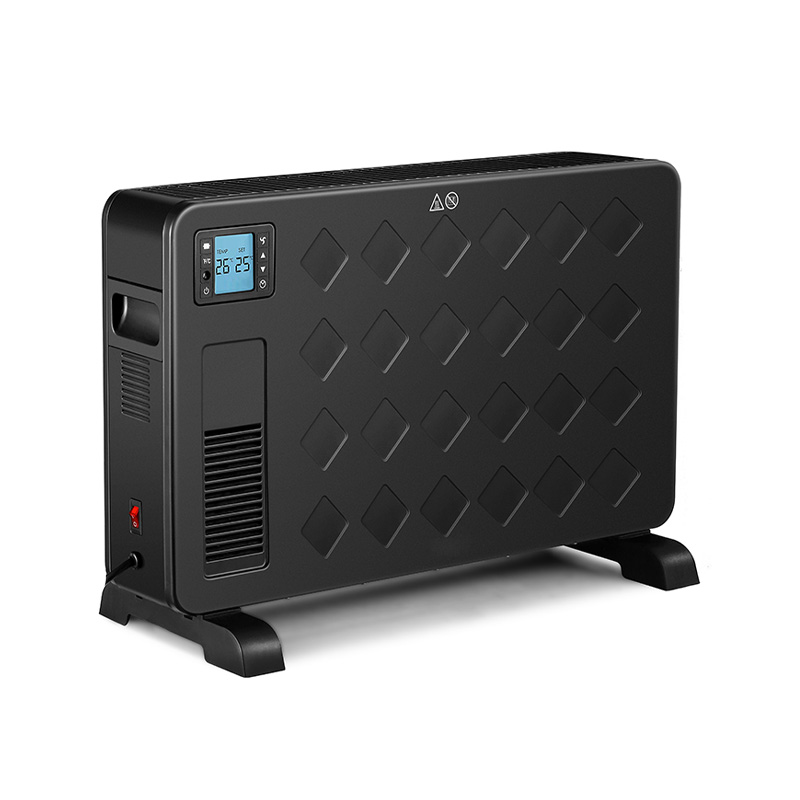To wall-mount a convector heater, you should follow the manufacturer's guidelines and consider the following installation requirements for optimal performance:
Mounting Location: Evaluate the entire room's layout, considering furniture arrangement and traffic flow. Identify areas where the convector heater's heat can be most effectively distributed. Additionally, take into account any potential obstacles that might impede the heater's airflow. This meticulous planning ensures not only optimal heating performance but also an aesthetically pleasing integration into the overall room design.
Wall Strength: Conduct a comprehensive assessment of the wall's load-bearing capacity, considering factors such as material strength, thickness, and structural integrity. Examine the wall for any signs of weaknesses, such as existing cracks or damage. If the convector heater is substantial or if the wall's capacity is in question, consulting with a structural engineer becomes crucial. This professional evaluation ensures a secure mounting that withstands the test of time.
Mounting Height: Take a holistic approach to determining the mounting height, considering factors like room dimensions, furniture placement, and occupants' average eye level. Strive for an installation that not only optimizes heating efficiency but also integrates seamlessly with the room's aesthetics. Achieving the right balance ensures both functional and visual harmony in the space.
Stud Placement: Employ advanced stud-finding techniques to pinpoint the exact locations of wall studs. Utilize multiple stud finders or alternative methods, such as measuring from corners or electrical outlets, to cross-verify stud positions. Taking this extra step ensures that the convector heater is securely anchored to the strongest points in the wall, minimizing any risk of instability or detachment over time.
Mounting Bracket: Pay meticulous attention to the installation of the mounting bracket. Examine its design and compatibility with the convector heater's backplate, ensuring a snug fit. If the bracket features adjustable components, customize them to the specific requirements of your installation. By meticulously following the manufacturer's bracket installation instructions, you guarantee not only stability but also an optimal alignment for the heater.
Level Installation: Elevate the installation process by using precision levels, even opting for digital levels for utmost accuracy. This meticulous approach guarantees not only a visually pleasing result but also prevents any potential operational issues caused by uneven heating. By investing in precision tools and taking the time to achieve perfect horizontal alignment, you elevate the professionalism of the installation.
Electrical Connection: Go beyond the basic consideration of proximity to a power outlet. Evaluate the aesthetics of electrical wiring, ensuring it seamlessly integrates with the room's design. Conceal wiring where possible, either by routing it through the wall or using color-matched conduits. When hardwiring, pay scrupulous attention to the manufacturer's electrical installation guidelines and engage a licensed electrician to guarantee compliance with safety standards and regulations.
Ventilation: Elevate your understanding of ventilation by examining the convector heater's internal airflow dynamics. Consider not just the external vents but also how air circulates within the unit. By understanding these intricacies, you can ensure that the wall-mounted installation not only adheres to ventilation requirements but also enhances the heater's overall efficiency and lifespan.
Thermostat Accessibility: Extend your consideration beyond mere accessibility to a profound understanding of user interaction. Analyze the ergonomics of thermostat placement, ensuring it aligns with user habits and convenience. If the convector heater features remote control capabilities, strategically position it for optimal signal reception. This user-centric approach enhances the overall experience, ensuring effortless control and adjustment.
CH-02TF






